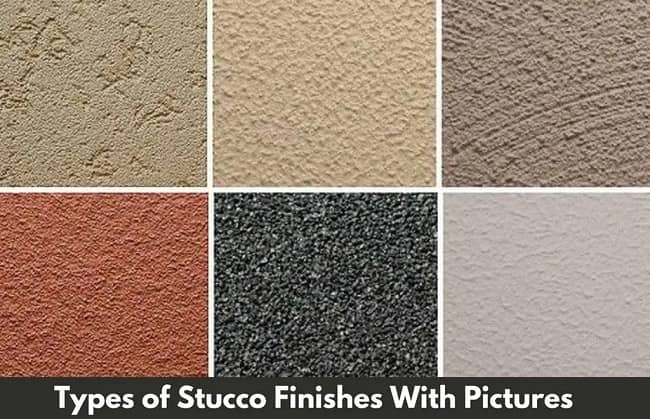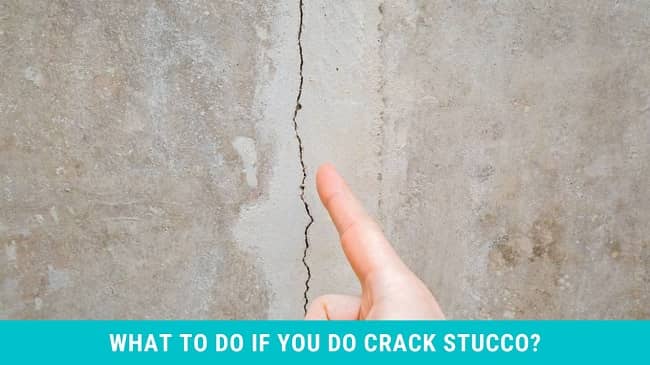I’m sure you’ve noticed how hard it is to get into stucco walls for drilling or other purposes. It can be a huge chore, especially when working up a ladder, and the drill bit keeps popping out. You spend more time trying to find the drill bit than actually drilling!
This post will tell you how to drill into Stucco without cracking it. I’ll also go over with preparations you’ll want before starting your project and some safety tips for preventing accidents.
Article Summary
Types of Stucco

There are two main types of Stucco: traditional and synthetic.
Traditional Stucco is a mixture of lime, sand, and water. It is applied in two coats with a mesh embedded in the final coat. It is the most durable type of Stucco and can last up to 50 years.
Synthetic Stucco is a fiberglass-reinforced polymer that is applied in one coat. It is less durable than traditional Stucco and typically only lasts 10-15 years.
How To Prep The Area Before Drilling Into Stucco?

Stucco is a popular exterior wall finish for homes and businesses. It is made from a mixture of Portland cement, water, and sand. Stucco can be applied in various ways and finishes, from a smooth, polished surface to a rough, textured finish.
While Stucco is a durable material, it can be damaged if drilled into it without proper preparation. Here are a few tips on how to prep the area before shooting into Stucco:
- Always use a drill bit that is the same size or smaller than the drill bit you are using to make the hole. A more significant drill bit can damage the Stucco.
- Drill slowly and carefully, using even pressure. Only apply a little pressure, or you may damage the Stucco.
- Use a drill guide to help you keep the drill bit straight as you drill. This will help to prevent damage to the Stucco.
- When the drill bit starts to wander off course, stop drilling and re-align the drill bit before continuing.
- If drilling into a section of Stucco that has already been damaged, take extra care not to damage the Stucco further.
How To Drill Into Stucco Without Cracking: A Step-By-Step Guide
Installing a new light fixture, fixing a leaky faucet, or just wanting to hang a picture on your stucco wall? Drilling into Stucco can be daunting, but it can be a breeze with the right tools and a little know-how.
Here is a step-by-step guide to drilling into Stucco without causing damage:
Step- 1
Choose the right drill bit. Make sure you have a drill bit that is the same size or smaller as the screws or nails you will use. A drill bit that is too large will cause damage to the Stucco.
Step- 2
Drill a pilot hole. A pilot hole is a small hole drilled before the central hole to prevent the drill bit from skipping or bouncing around. To prepare a pilot hole, use a drill bit smaller than the screw or nail you will use. Drill the pilot hole in the center of the area you will be drilling into.
Step- 3
- Drill the central hole.
- Once the pilot hole is drilled, use the drill bit the same size as the screw or nail you will be used to prepare the central hole.
- Make sure the drill is perpendicular to the surface you are drilling into, and guide slowly to avoid damaging the Stucco.
Step- 4
Insert the screw or nail. Once the central hole is drilled, insert the screw or nail and drive it in with a screwdriver or hammer.
Step- 5
Seal the hole. Once the screw or nail is in place, use a sealant to seal the hole and prevent water from leaking in. A bond can be purchased at any hardware store.
By following these simple steps, you can drill into Stucco without causing any damage.
What To Do If You Do Crack Stucco?

It would help if you repaired it as soon as possible. The longer you wait, the more damage the crack will do. The most important thing to remember is that the repair needs to be done correctly. If you don’t do it right, you will end up with more cracks.
The first step is to clean the crack. It would help if you ensured that there is no dirt or debris in the crack. If there is, you need to clean it out. Once the crack is clean, you need to apply a patch. There are a few different types of patches that you can use. The most important thing is to ensure that the patch is the same color as the Stucco.
Once the patch is applied, you need to let it dry. Once it is dry, you need to sand it down. Make sure that the patch is smooth and that there are no bumps or lumps. Once it is smooth, you can apply the paint. Make sure that you use a primer before you apply the paint. The primer will help the paint to stick to the Stucco.
The best way to fix it is to use a patching compound. First, make sure the area is clean and dry. Then, use a putty knife to apply the combination to the crack. Smooth it out and let it dry.
The Dos And Don’ts Of Drilling Into Stucco
If you’re planning to drill into Stucco, it’s essential to know the dos and don’ts. Here are some tips to help you get the job done safely and correctly:
Do’s
- Please use the right drill bit. When drilling into Stucco, use a carbide-tipped bit.
- DO use a drill guide. A drill guide will help you keep the drill bit straight as you drill into the Stucco.
- Make sure to drill slowly. When drilling into Stucco, drill slowly to avoid damaging the surface.
- You can use a vacuum cleaner. When drilling into Stucco, it’s essential to use a vacuum cleaner to clean up the dust and debris.
Don’ts
- Only try to drill with a drill guide. If you don’t use a drill guide, you run the risk of drilling at an angle, which could damage the stucco surface.
- Please only drill slowly. If you drill too quickly, you may damage the drill bit or the stucco surface.
- Don’t try to drill without a vacuum cleaner. The dust and debris may damage the stucco surface if you don’t use a vacuum cleaner.
- Try to use a different drill bit. A standard drill bit will not be able to penetrate the stucco surface.
FAQs
Will drilling into Stucco crack it?
Yes, sometimes the drilling into Stucco can crack it. If you are going to drill into Stucco, be sure to use a sharp drill bit and take your time. If drilling a large hole, start with a more minor bit and work your way up to the desired size. Be careful to hit the drill bit against the Stucco sparingly or you could cause the Stucco to crack.
How do you drill something in Stucco?
The first step is to find the right spot to drill. The next step is to drill a pilot hole. Once the pilot hole is drilled, you can start drilling the hole in the Stucco. Keep the drill bit straight and apply even pressure while drilling.
Why can’t I drill through the Stucco?
Drilling through Stucco is difficult because the material is very tough and durable. The drill bit can quickly become clogged with the material, which can cause the bit to break or damage the surface. In addition, Stucco is a very brittle material and can easily break or crack when drilled.
Do you need an anchor when drilling into Stucco?
No! For most drill bits, an anchor is not necessary. You do not need an anchor if you use a standard drill bit, a masonry bit, or a bit with a broad point. However, you will need an anchor if you use a bit with an issue, such as a spade bit or a hole saw.
Final Words
I initially thought it was just me—that I wasn’t good with drills. But after talking to several friends and neighbors, I discovered this is a common problem. When it comes to Stucco, almost everybody has had some trouble with how to drill into stucco without cracking. I hope you can find the solution you have been looking for. Thanks for reading!